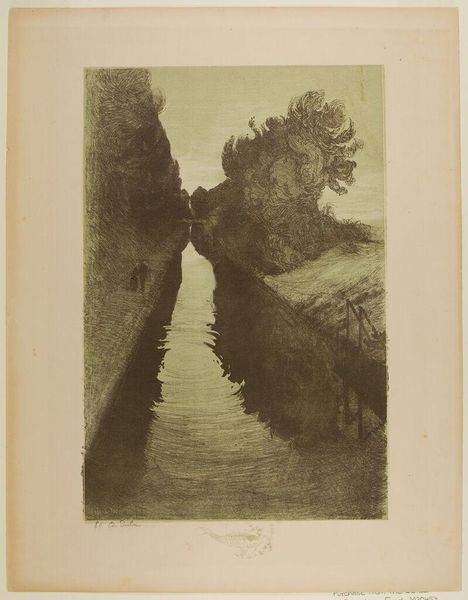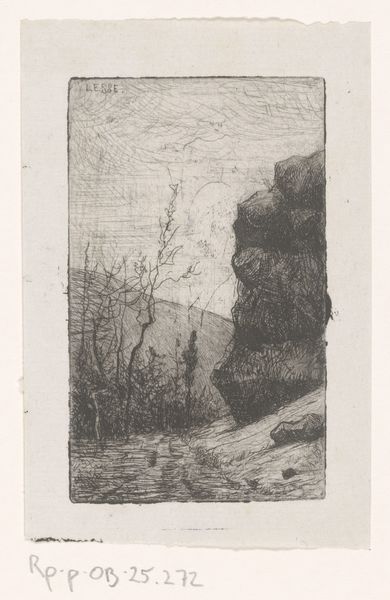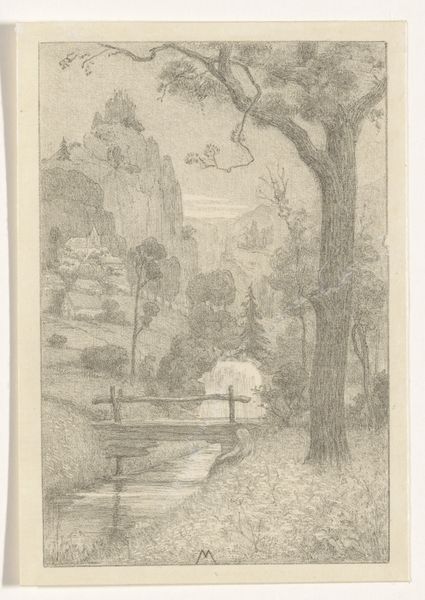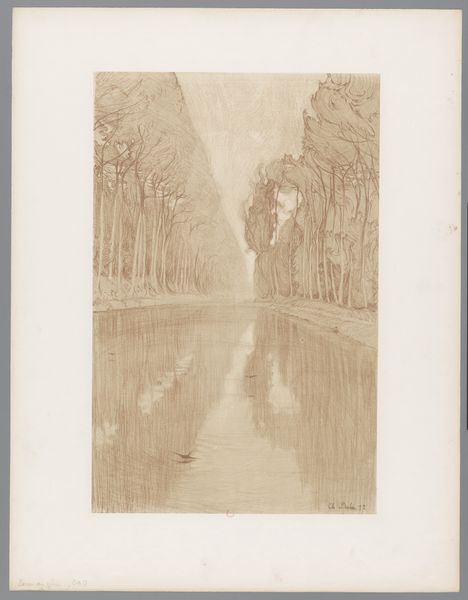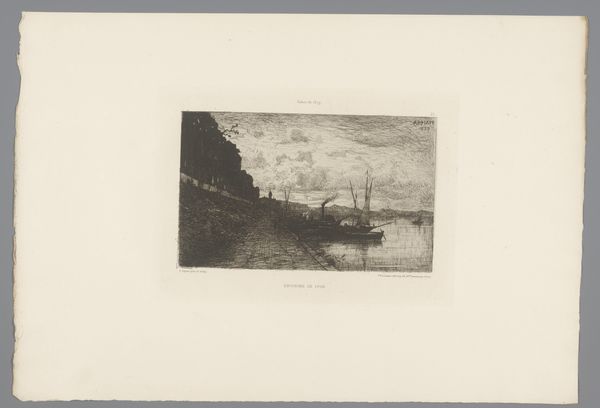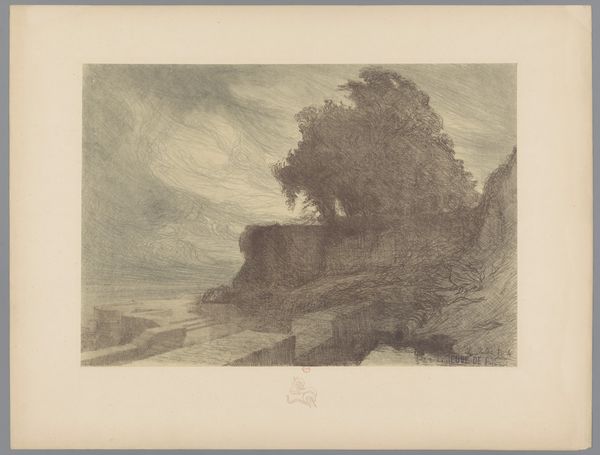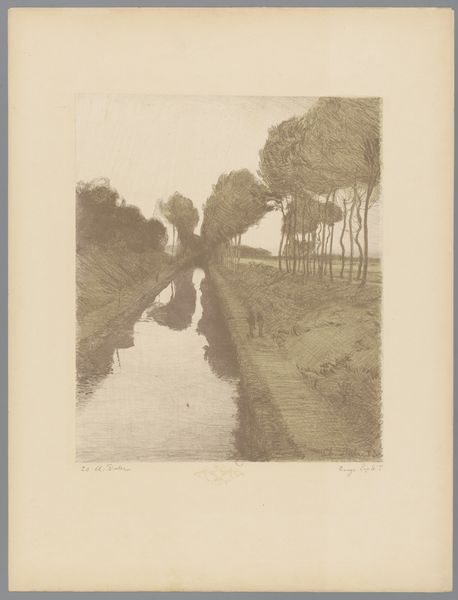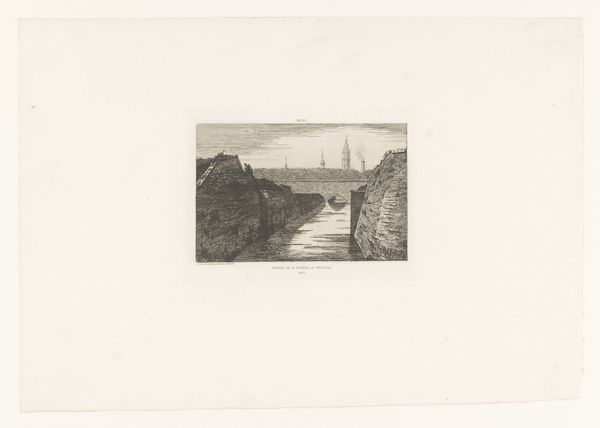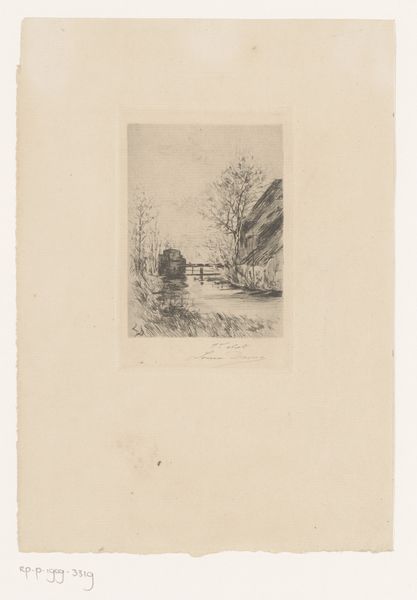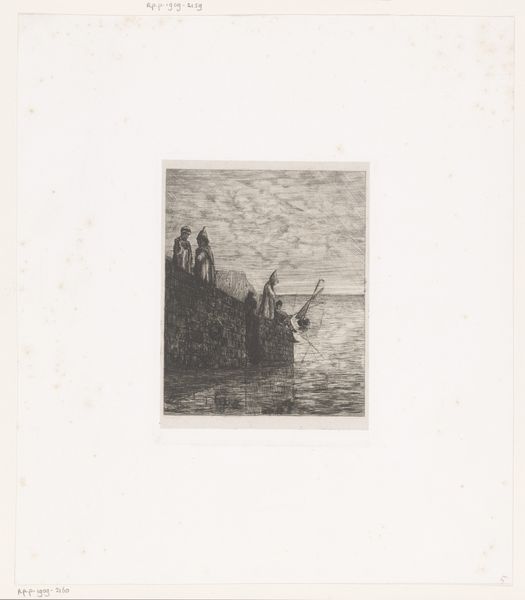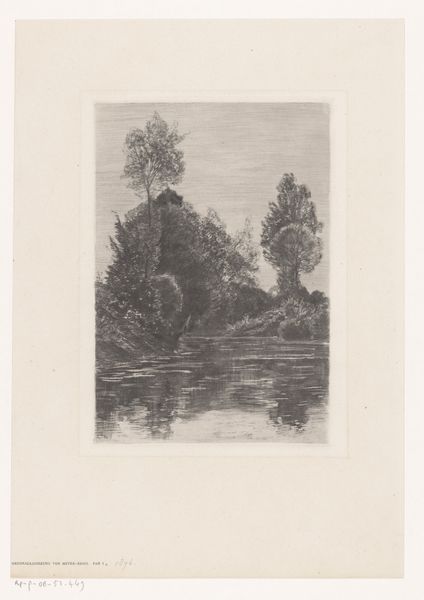
Dimensions: height 654 mm, width 503 mm
Copyright: Rijks Museum: Open Domain
Curator: This etching by Charles-Marie Dulac, dating from around 1892-93, is titled "Wandelend paar langs een kanaal" – that's "Walking Couple Along a Canal" in Dutch. What strikes you first about it? Editor: A curious sort of hush. The scene, cloaked in subtle gradations of gray, feels profoundly still. It's as if the world is holding its breath. Is it my imagination, or is there something ominous hanging in the air? Curator: Well, considering Dulac's Symbolist leanings, I doubt it’s accidental! Beyond that pervading sense of foreboding, though, I see a delicate interplay of technique and message here. As an etching, it’s intrinsically about mark-making: think of the copperplate, the acid… the deliberate scratching away. That intense physical process lends the scene so much emotion, right? Editor: Absolutely! And it does beg the question: Why printmaking? He clearly was not aiming for mass production. Surely there was something in the labor-intensive act of carving this vision into metal… The repetition? Curator: That’s where my thoughts wandered. Printmaking offers this interesting dialogue: you're alone with the plate but imagining the hands that will eventually hold the print. The intimate becomes accessible, almost democratized, although often available only for a select few. The 'walking couple' also adds this human, intimate dimension that contrasts with the cold and anonymous nature of a canal. Do you sense anything about their narrative in this stark landscape? Editor: Not much beyond them being dwarfed. See, that waterway – is it constricting or life-giving? It appears deceptively tranquil but has steep and sharp edges. It leads you away. Perhaps the journey they embark on reflects the viewer’s uncertainty, caught between feeling menaced and feeling strangely drawn in. Curator: Yes! Dulac, with these lines and shadows, speaks a visual language that goes beyond mere representation. The very material – the ink pressed into paper – breathes with symbolic resonance, almost becoming another language. What I'd love to know is what music they were listening to? Editor: Ha! Yes! The texture creates a kind of sonic hum! What strikes me most in closing, actually, is how radically Dulac’s dark, personal, process-driven printmaking deviates from other late 19th-century, pastoral scenes. Curator: True! A melancholic beauty, rendered with incredible mastery of a humble craft. It speaks softly, but it whispers volumes about the anxieties of its time.
Comments
No comments
Be the first to comment and join the conversation on the ultimate creative platform.
